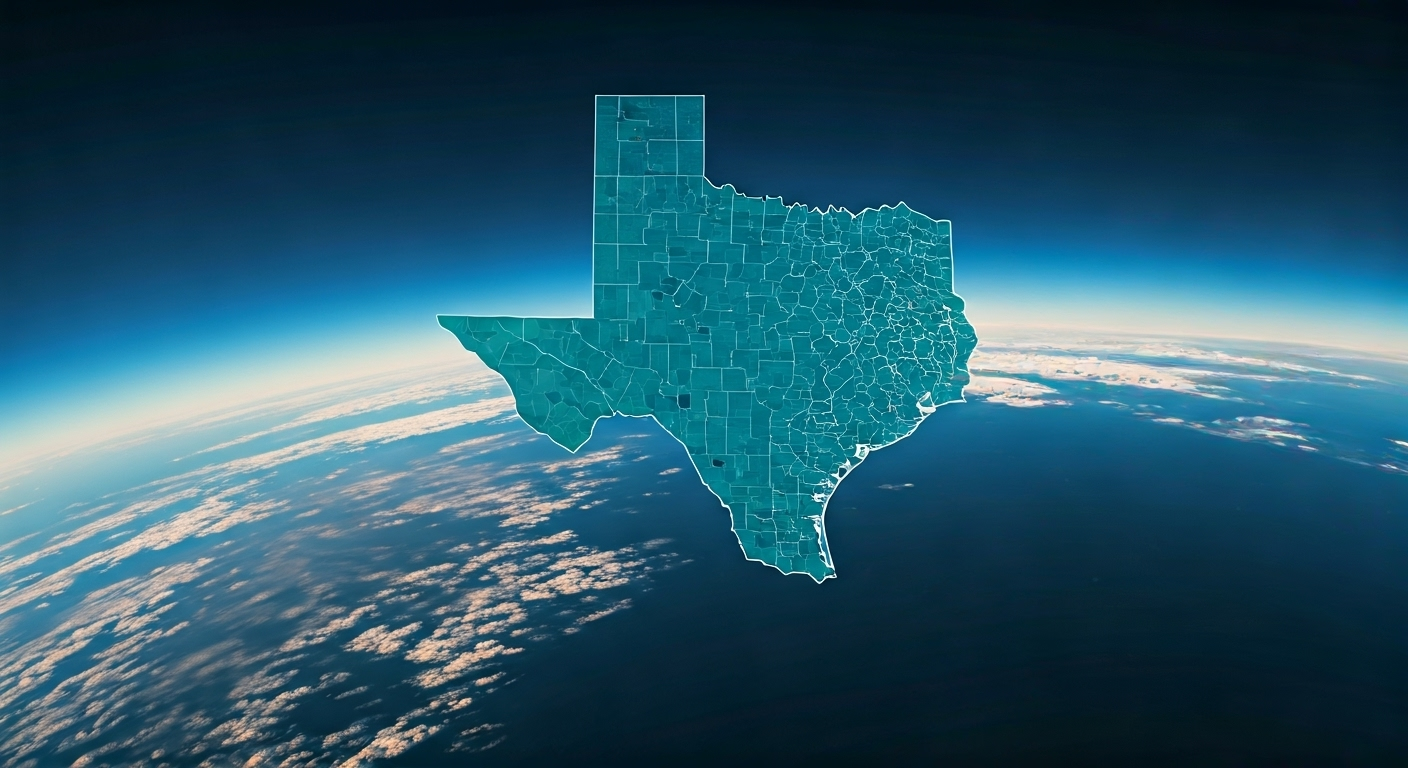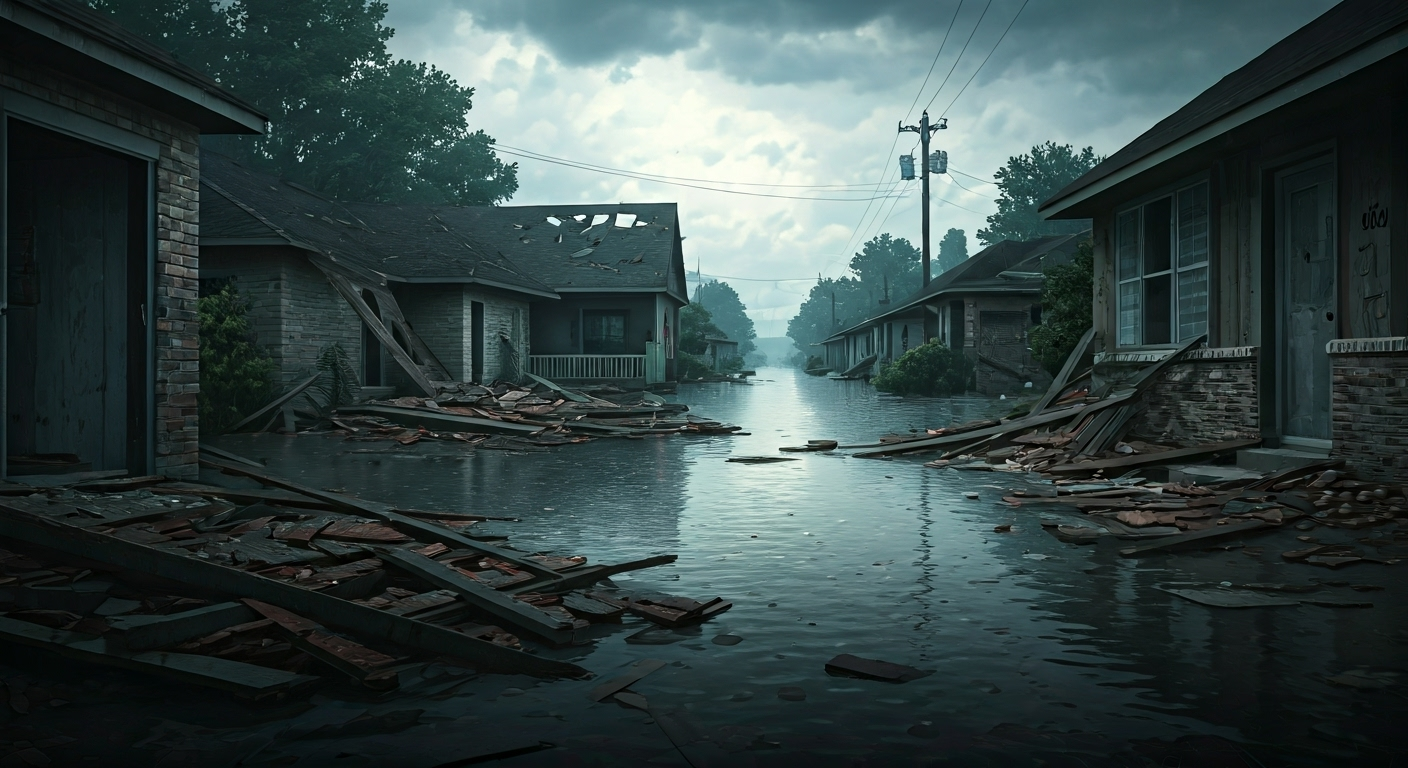Disaster Preparedness for Hurricane's in Texas
)
Key Highlights
-
Texas’s geographic location along the Gulf of Mexico places it at high risk during the hurricane season, making coastal cities and inland areas vulnerable to tropical cyclones.
-
Major hurricanes like Harvey, Ike, and Rita have caused widespread destruction, including power outages, displaced populations, and economic losses.
-
Emergency planning, including evacuation zones and public warning systems, is vital for the safety of millions residing in southeast Texas.
-
Community organizations, such as the Salvation Army and American Red Cross, support disaster relief and resilience efforts.
-
Effective coordination between FEMA, the Texas Division of Emergency Management (TDEM), and local authorities is critical for disaster management.
Introduction
The Texas coast often faces natural disasters, mostly during hurricane season. The warm waters in the Gulf of Mexico help the storms to grow. These storms hit both the coast and inland areas, bringing heavy damage over and over. To protect people and property in Texas, people need to prepare and make plans before anything happens. Working together is also very important. When people know what makes an area at risk and use good disaster plans, the damage from future hurricane seasons can be much less. Let’s look at what is needed to get ready for hurricanes in Texas.
Texas’s Vulnerability to Hurricanes
 The Gulf of Mexico is important for Texas when it comes to hurricanes. The warm sea surface temperatures in the gulf help these storms get stronger fast. That is why there is rapid intensification before the storm hits land. Places along the texas coast, like Houston and Galveston in southeast texas, are in danger. These places are close to water and sit low to the ground, which makes them easy targets.
The Gulf of Mexico is important for Texas when it comes to hurricanes. The warm sea surface temperatures in the gulf help these storms get stronger fast. That is why there is rapid intensification before the storm hits land. Places along the texas coast, like Houston and Galveston in southeast texas, are in danger. These places are close to water and sit low to the ground, which makes them easy targets.
During hurricane season, many people and important buildings are right in the path of the storm. This puts a lot of people at risk when there are natural disasters. If we know what makes texas coast cities weak during storms, we can be ready for whatever comes from the gulf of mexico.
Historical Overview of Major Hurricanes (Harvey, Ike, Rita)
Hurricanes have had a big impact on Texas. Some major ones are Harvey, Ike, and Rita. In 2005, Hurricane Rita led to a huge number of people leaving their homes. There was extensive damage in the Houston area and along the Texas coast. After that, Hurricane Ike hit in 2008. There were widespread power outages and lots of flooding then. But Hurricane Harvey in 2017 stands out. It was known for its rapid intensification and a lot of heavy rain, contributing to the bad flash flooding that caused extensive damage and a need for long-term disaster recovery in Harris County and nearby areas in the United States.
Key Coastal and Inland Risk Zones in Texas
Texas’s coastal cities, like Houston, Galveston, and Corpus Christi, face big risks during hurricane season. Storm surge and wind can cause problems for the people who live there. The Texas coast is known to get flooded. This can hurt many homes and factories, such as the petrochemical plants by Galveston Bay.
The inland areas can have trouble too. Cities like Beaumont and Conroe are at risk from heavy rain and flooding inside the lands. When these population centers have low ground, this only makes the risk higher for everyone there.
In the Houston area, the storms can lead to problems with the power grid and other key systems. Working on good plans for these places will help reduce the damage during hurricane season.
Common Impacts of Hurricanes in Texas
 Hurricanes bring a lot of problems to Texas. Storm surges can cover coastal areas with water, which leads to heavy flooding and damage to buildings. Wind damage is also a big problem. It can knock down power lines, hurt important buildings, and block roads. This can cause blackouts that last a long time.
Hurricanes bring a lot of problems to Texas. Storm surges can cover coastal areas with water, which leads to heavy flooding and damage to buildings. Wind damage is also a big problem. It can knock down power lines, hurt important buildings, and block roads. This can cause blackouts that last a long time.
Many people have to leave their homes and move somewhere safe. This is not easy when so many people are trying to get out at the same time. Hurricanes also hurt the economy. Businesses cannot open as normal, and many types of work slow down or stop. It takes a lot of time and effort for cities and towns to recover. Let’s talk about these problems more below.
Coastal Flooding and Storm Surges
Storm surge caused by hurricanes is a big threat to the Texas coast. Places that are low, like Galveston Bay and the San Jacinto River area, often have very bad flooding when storms hit. The water can go up fast. It covers houses, roads, and even areas where people work.
City leaders are now working on plans to make bayous bigger to help with these flood problems. But, some government projects to fix things are still not ready. When these changes get held up, the risks go up.
Large barriers, like the $57-billion coastal protection project near Galveston, are meant to help stop so much flooding from future hurricanes. These projects are for the Texas coast to help protect people and businesses from storm surge, especially in places like Galveston Bay and the San Jacinto River.
Wind Damage and Infrastructure Loss
Hurricane winds cause a lot of problems for Texas’s roads and buildings. Power lines, cell towers, and transport often go down first. When hurricanes like Beryl hit the Houston region, there are power outages that last a long time. This kind of wind damage can be hard on hospitals and other important places in the Houston area.
CenterPoint Energy has had grid failures even in moderate storms. This shows that there are still weak points, and even minor wind events can cause trouble for power lines. Some buildings have repairs to help them stand up to a hurricane, but not many. The effort to prepare all buildings well is still not enough.
People in Texas need to get ready for these storms. We must spend money to make our roads and power lines stronger. Tropical cyclone patterns are changing and bringing stronger winds. This means there could be more power outages in the future if the Houston area and other places do not work together to improve the infrastructure.
Population Displacement and Economic Disruption
The human cost of hurricanes in Texas is high. Many people leave their homes and head to safer places. People from disaster zones often go to inland areas. This puts a lot of stress on shelters and community centers.
The impact on the economy is hard, too. Energy production, shipping, and other work often stop during and after storms. Hurricane Harvey, a significant event for the energy industry, was one example that hit these business areas. It left southeast Texas with damages that cost billions for disaster recovery.
When people lose homes and roads in Puerto Rico, it makes recovery even slower for those who are already vulnerable. This shows why we need fair and quick disaster recovery plans to help all people in southeast Texas.
State and Local Emergency Preparedness Strategies
Texas’s emergency management teams work on steps that help before problems happen. They set up easy-to-see evacuation zones and update the way buildings and roads are made safe. The goal is to be ready for natural disasters like a tropical storm. The Department of Public Safety and local groups work closer together now, so there can be fewer injuries and less loss when hurricane season comes.
The people in charge use warning systems that reach out to Texas towns and cities if natural disasters are close. Good resources and simple learning tools help everyone in the state handle risks when there is a tropical storm. The next part will show some important steps that help all of us in Texas be more prepared.
Evacuation Zones and Public Warning Systems
Evacuation works well when there are plans in place for certain areas and when people get clear messages. Important steps include:
-
Showing maps with the best ways to leave in the Houston area and pointing out safe places if there is coastal flooding.
-
Getting warnings out to people by letting local officials, TV news, secure websites, and the National Weather Service share the news.
-
Having drills every year to help people in the community be ready for a hurricane plan.
-
Giving live updates with apps and broadcast networks when hurricanes hit.
These active steps help millions in southeast Texas. People can stay safe and protect their homes from storms with these efforts.
Infrastructure Readiness and Critical Facility Protection
To improve disaster management, the government wants to make important places safer. This includes hospitals, water plants, and the power grids. CenterPoint Energy is working hard to make power lines and energy systems more steady and strong.
There are programs set up to look after roads and buildings. These use protective walls and smart grid tools. Places that often flood are getting bigger drains. This helps with water when it comes too fast.
Even with all this, people in inland areas can still lose power and water when it is hurricane season. This shows there is still a need for more help, more money, and more plans for the future.
Disaster Response: Roles of FEMA, TDEM, and Local Authorities
Disaster relief in Texas brings together the Federal Emergency Management Agency (FEMA), TDEM, and local leaders. Each group has its own job in helping during emergencies. They all work together so things run smoothly all over the state.
Federal and state groups take care of housing. They also help clean up after storms and work to turn on the lights and water. Local leaders handle their own plans to help people get back to normal. Everyone pulls together so southeast Texas can get back on its feet after hurricanes. Here is a look at what each one does to help.
Coordination of Federal and State Agencies
FEMA gives money help for home repairs and other costs right after the government declares a disaster. TDEM works on the ground to help and links people who have lost their homes to what they need.
State officials, with leaders like State Senator Carol Alvarado, speak up about what should come first after a disaster. They work with the federal government to make sure that help goes to everyone, even in low-income places.
This team approach helps people get back on their feet faster after storms like Harvey and Ike. It also makes sure there is better teamwork during hurricane escapes and after the storm is over.
Local Government and First Responder Initiatives
Local authorities have important jobs after hurricanes. The City of Houston sends out ambulances, fuel, and emergency gear during disaster relief.
First responders help clear debris, keep people safe, and work with the state on transport. Firefighters and paramedics also go to hospitals when they are crowded, so people can get care when they need it.
To meet big needs in hard times, local plans set up cooling centers in the area and arrange ways for families to get back home after the disaster.
Building Community Resilience and Support Networks
Building up community strength is at the core of disaster recovery in Texas. People who volunteer, groups who help each other, and NGOs all bring emergency help when there are tropical storms and hurricanes.
Groups such as the American Red Cross and different local teams work closely with those who need help. They make sure that places to stay and needed aid are easy to get. These groups also help people get ready for what might come later, working to keep risks lower in the future.
The Role of NGOs and Volunteer Organizations
Community strength starts with the active work of groups like the Salvation Army, the American Red Cross, and the University of Houston volunteer networks.
These groups help with things like giving out food, helping with housing, and offering other needed services like counseling after a hurricane. When these groups work together, they help families who had to leave their homes after storms to get settled. This makes it easier for those families to join disaster recovery programs.
What they do supports what the state is already doing for relief. This way, Texas people have their needs looked after, even when the hurricane season gets really rough.
Shelters, Community Centers, and Mutual Aid
Texas shelters and mutual aid centers give people who are forced to leave their homes a safe place to stay. Some facilities, like Rice University, help families before and after they have to leave by giving them direct support.
Many community centers also work as cooling stations and offer short-term places to stay. They focus on people who need the most help, especially when there are widespread power outages.
Mutual aid systems work hard to be fair by bringing important things to those who have less. This makes sure no group is left out when it is time to recover from disasters in Sugar Land and other places.
Conclusion
In the end, being ready for hurricanes in Texas helps lower the damage these storms can cause. Knowing about the unique risks in the state, shown by past hurricanes like Harvey and Ike, helps people make good plans for any emergency. It is important to know your evacuation zones, how the public warning systems work, and what groups like FEMA and TDEM do when there is a disaster. By working with local NGOs and volunteer groups, we, as a community, get stronger. This makes it easier for us to handle and bounce back from natural disasters during hurricane season. If you would like one-on-one help to get ready for the next hurricane season, you can get a free consultation with our experts today.
Frequently Asked Questions
How are evacuation routes determined and communicated?
Evacuation zones are chosen by emergency planning teams. They use maps that look at flood risk levels. Local officials share the routes you should take. The National Weather Service puts out updates on their secure .gov websites. You can also get this news from government announcements. There will be messages on TV, radio, and mobile apps, too.
What are the first steps to take after a hurricane hits my area?Check for any injuries or signs of storm damage first. If you find something wrong, get in touch with your local officials right away. It is also good to check the area for power outages. During disaster recovery, follow all instructions given to you and reach out to state or federal groups, such as FEMA, if you need somewhere to stay or help with money while things get back to normal.
How do local authorities assist with housing and utilities post-hurricane?Officials help to run temporary shelters. They also work on bringing back power and water. These people help you file claims if your home is damaged. The services are for places like Sugar Land and other southeast Texas areas. Their main job is to make things steady again after a storm. They want to help people get back to normal as fast as they can.
What lessons have been learned from recent hurricanes in Texas?Events such as Hurricane Harvey have shown there are gaps in how people and the government prepare and respond quickly to big storms. By keeping an eye on rapid intensification, experts have made atmospheric administration models better. Also, New Orleans has led the way by making cities tougher through new ideas in infrastructure and their approach to climate change.







